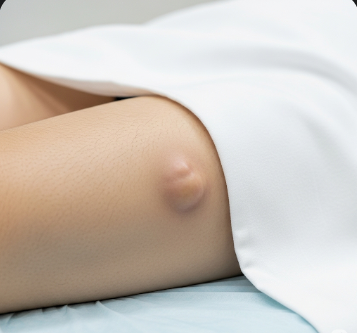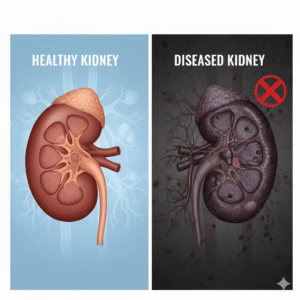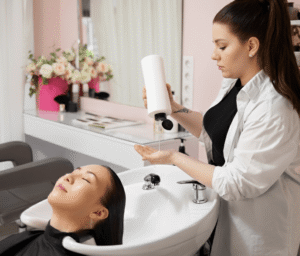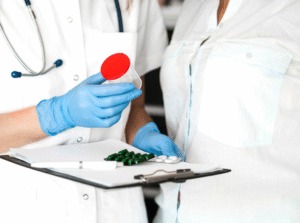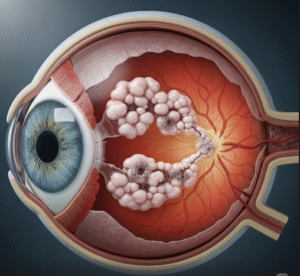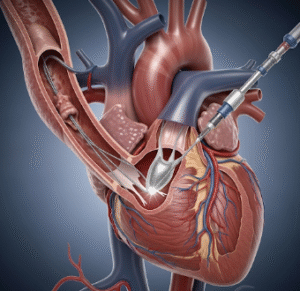Overview
A lump on the testicle, also known as a scrotal mass, refers to an abnormal swelling or nodule within the scrotum or testicles. This condition can affect males of all ages, though certain causes are more common in younger men (testicular cancer) or older adults (epididymal cysts or hydrocele).
In Korea, urology clinics and hospitals provide specialized evaluation and management for scrotal masses. Advanced diagnostic tools, including ultrasound, blood tests, and surgical assessment, allow for accurate differentiation between benign and malignant causes. Early detection is crucial for successful treatment, especially in cases of testicular cancer.
Key Facts
- ➔ Scrotal masses can be benign or malignant, and most are not immediately life-threatening.
- ➔ Common symptoms include swelling, pain, heaviness, or a palpable lump.
- ➔ Testicular cancer, though rare, is most common in men aged 15–35 years.
- ➔ Early detection significantly improves treatment outcomes, particularly for malignant tumors.
- ➔ Timely medical evaluation is essential for diagnosis, treatment, and preserving fertility.
What is a Lump on the Testicle (Scrotal Masses)?
A lump on the testicle refers to any abnormal growth, swelling, or nodule within the scrotum:
- ➔ Benign masses: Include hydrocele (fluid accumulation), epididymal cysts, spermatocele, and varicocele (dilated veins).
- ➔ Malignant masses: Testicular cancer arises from abnormal growth of testicular cells.
- ➔ Clinical significance: Any lump in the testicle warrants evaluation to rule out cancer, even if painless or slow-growing.
- ➔ Detection: Most lumps are first noticed during self-examination or routine clinical check-ups.
What Symptoms Are Related To
Scrotal masses may present with various symptoms depending on the cause:
- ➔ A palpable lump in one or both testicles
- ➔ Scrotal swelling or heaviness
- ➔ Pain or tenderness in the scrotum or lower abdomen (may be mild or severe)
- ➔ Changes in testicle size or shape
- ➔ Feeling of fluid or irregular mass in the scrotum
- ➔ Occasionally, systemic symptoms like fatigue or unexplained weight loss if malignancy is present
- ➔ Rarely, inguinal swelling or pressure due to herniation or enlarged lymph nodes
Identifying these symptoms early is critical for differentiating benign from malignant causes.
What Causes / Possible Causes
Scrotal masses can result from a variety of conditions:
- ➔ Hydrocele: Fluid collection around the testicle causing painless swelling
- ➔ Varicocele: Enlarged veins in the scrotum, usually on the left side, often painless
- ➔ Spermatocele: Cyst in the epididymis filled with sperm fluid
- ➔ Epididymitis: Infection or inflammation causing pain and swelling
- ➔ Testicular torsion: Twisting of the testicle causing severe pain and potential tissue damage
- ➔ Hernia: Inguinal hernia may present as scrotal swelling
- ➔ Testicular cancer: Painless lump or nodule, sometimes with heaviness or mild discomfort
- ➔ Trauma: Injury causing hematoma or swelling within the scrotum
Proper evaluation is essential to determine the exact cause and ensure timely treatment, particularly when malignancy is suspected.
When Should I See My Doctor
Immediate medical evaluation is recommended if a scrotal mass is:
- ➔ Painless, firm, or growing rapidly
- ➔ Accompanied by testicular pain, redness, or warmth
- ➔ Associated with abdominal discomfort, lower back pain, or unexplained weight loss
- ➔ Found incidentally during self-examination or routine check-up
- ➔ Persistent or recurrent swelling, or history of trauma with persistent mass
Early consultation with a urologist ensures prompt diagnosis, cancer screening, and appropriate management.
Care and Treatment
Treatment for scrotal masses depends on the underlying cause:
- ➔ Benign conditions: Often monitored or treated conservatively; hydrocele or varicocele may require surgical repair if symptomatic
- ➔ Infections: Antibiotics and supportive care for epididymitis or orchitis
- ➔ Testicular torsion: Emergency surgery to untwist the testicle and restore blood flow
- ➔ Testicular cancer: Orchiectomy (surgical removal of affected testicle) with or without chemotherapy/radiotherapy depending on stage
- ➔ Post-surgical care: Pain management, infection prevention, and monitoring for recurrence
- ➔ Fertility considerations: Sperm banking may be advised before treatment for malignancy or bilateral conditions
Regular self-examination and follow-up are crucial to detect recurrence or complications early.
Treatment Options in Korea
Korean hospitals provide state-of-the-art care for scrotal masses:
- ➔ Diagnostic evaluations: Ultrasound, MRI, blood tests (tumor markers), and physical examination
- ➔ Specialist consultations: Urologists and oncologists for accurate diagnosis and treatment planning
- ➔ Medical therapy: Antibiotics for infection, anti-inflammatory therapy for inflammation
- ➔ Minimally invasive and surgical procedures: Hydrocelectomy, varicocelectomy, orchiectomy for cancer, and hernia repair
- ➔ Fertility and hormonal counseling: Preservation strategies before surgery or chemotherapy
- ➔ Multidisciplinary care: Coordination between urologists, oncologists, radiologists, and fertility specialists for personalized treatment
Leading hospitals such as Seoul National University Hospital, Asan Medical Center, and Samsung Medical Center provide advanced diagnostics, surgical precision, and follow-up care, ensuring optimal outcomes and early detection of malignancy.
In Summary: A lump on the testicle (scrotal mass) can range from benign cysts to serious malignancies. Timely evaluation and treatment in Korea can ensure early detection, effective management, and preservation of fertility.
- ➔ Key Takeaway: Any new or persistent testicular lump warrants medical evaluation, even if painless.
- ➔ Action Point: Consult a urologist promptly for diagnosis, treatment planning, and ongoing monitoring.

